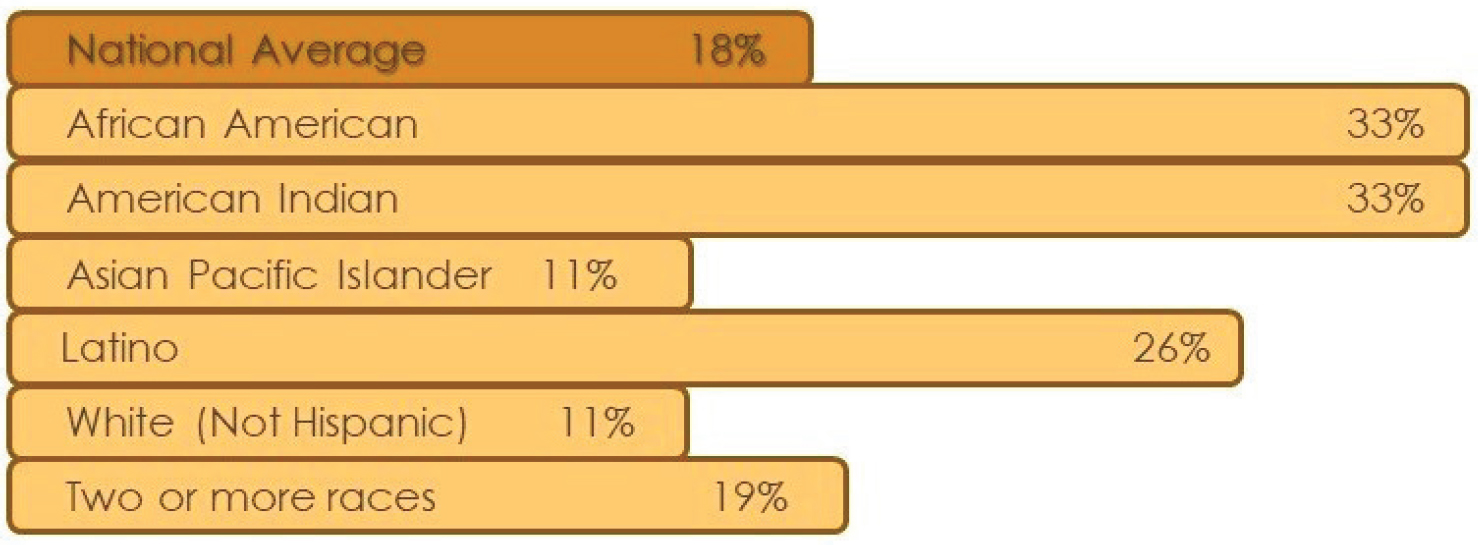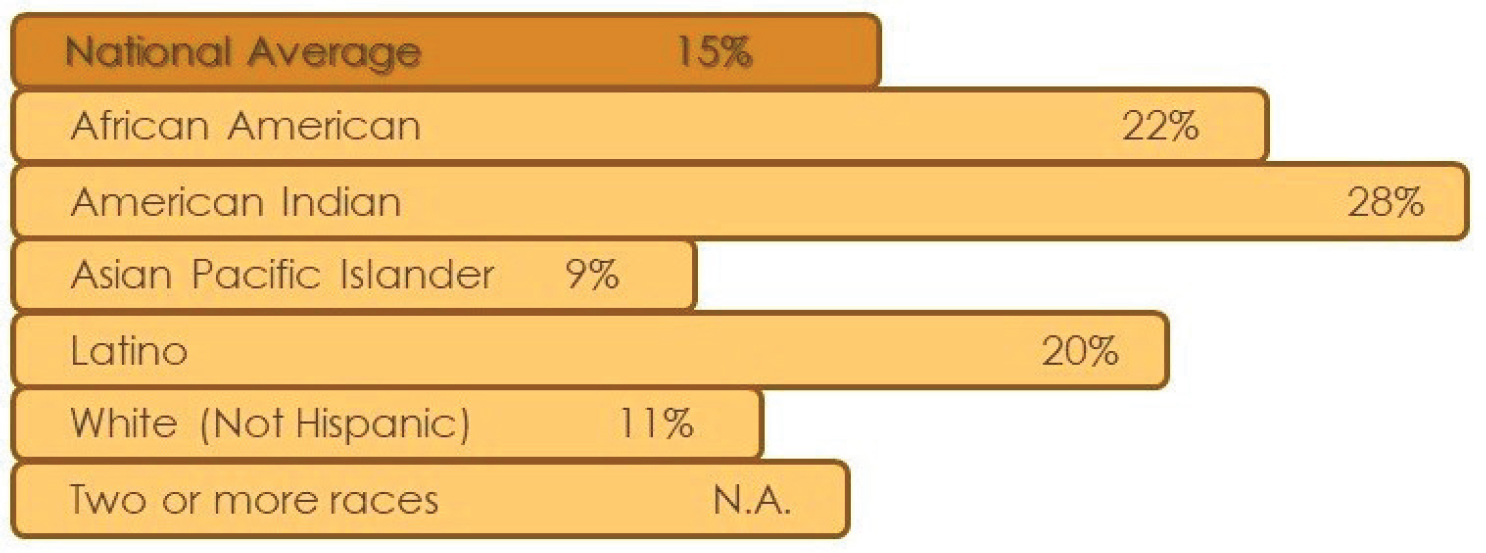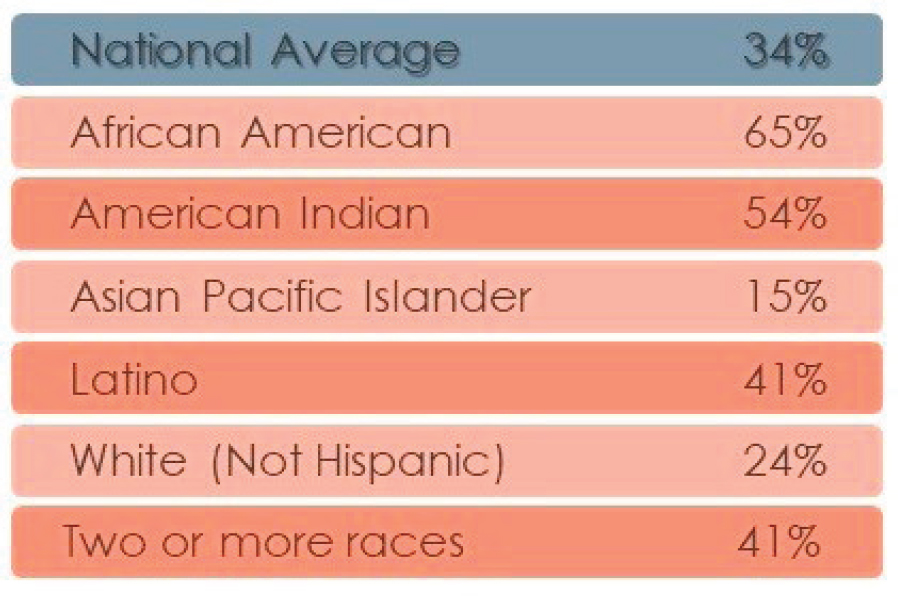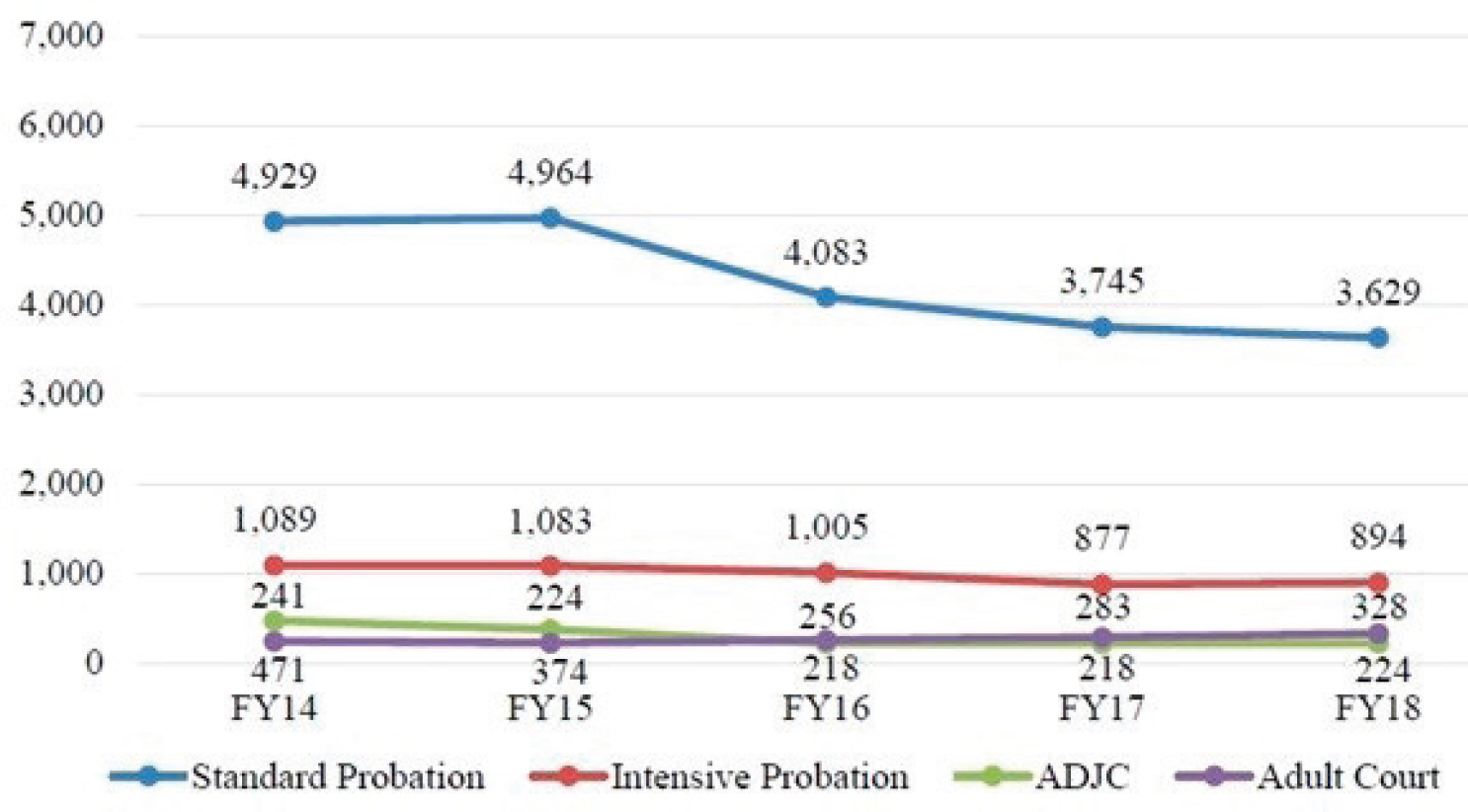“A key measure of any legal system is how well it treats the most vulnerable in its communities,” said Scott Bales, executive director of the Institute for the Advancement of the American Legal System at the University of Denver and former chief justice of the Arizona Supreme Court, in the opening session of the workshop. “And beyond fairness and equity for those directly affected, how our justice system treats vulnerable youth directly affects the health of our communities, our state, and indeed our nation.”
The opening session of the workshop featured two speakers, Scott Bales, Institute for the Advancement of the American Legal System, Arizona Chief Justice (ret.) and Presiding Judge Kathleen Quigley, Juvenile Bench, Pima County, Arizona, who examined how the juvenile justice system deals with youth of color. In the process, they described opportunities to create better futures for children who intersect with the juvenile justice system and for communities of color more broadly.
CHILDREN AND THE JUVENILE JUSTICE SYSTEM
About 74 million children ages 18 and under live in the United States, constituting 22.1 percent of the population, up from 64 million in 1990 (Annie E. Casey Foundation, 2019), Bales observed. Texas (which added 2.5 million children), Florida (1.2 million), and California (1.1 million) accounted for half the total growth in the number of children since 1990. Every state but four in the South and West saw its child population grow; most states in the Northeast and four states in the Midwest saw theirs decrease. These regional shifts “obviously create issues,” said Bales, “because it’s not easy, for instance, to move a school building from Massachusetts to Arizona just because of dramatically different shifts in population.”
U.S. children are increasingly diverse, as is the population in general. In 1990, 69 percent of children in America were White. By 2017, that figure was 53 percent. About 18 million U.S. children are immigrants or have an immigrant parent. Since 1990, the share of children with at least one immigrant parent has doubled from 13 to 26 percent (Annie E. Casey Foundation, 2019).
Every state has a greater percentage of children of color than it did three decades ago, Bales continued. Since 1990, California and New Mexico have become states where the majority of children are Latino; Texas will soon follow. In 1990, Latino children were only 1 percent of children in the five states of Alabama, Arkansas, North Carolina, South Carolina, and Tennessee. By 2017, the percentages in these states ranged from 8 percent (Alabama) to 16 percent (North Carolina). In 1990, Asian and Pacific Islander children were at least 5 percent of children in California, Hawaii
(where they have long been the majority), and Washington. Since then, 12 more states have joined the list. The percentages of African American and Native American children nationwide held steady at 15 percent and 1 percent, respectively, though the percentages vary substantially across states.
Some measures of well-being among children have shown encouraging trends, Bales reported. Children living in poverty declined from 22 percent in 2010 to 17 percent in 2017, representing 13.4 million children. Those without health insurance declined from 8 percent in 2010 to 5 percent in 2017, representing 3.9 million children. Teens who abused alcohol or drugs declined from 5 percent in 2015–2016 to 4 percent in 2016–2017, representing 1 million children. Children living in single-parent families remained at 34 percent in 2010 and 2017, representing 24 million children.
Racial and ethnic inequities persist across many measures of well-being, Bales emphasized. Some groups still have much higher rates of poverty than do others (see Figure 2-1). The percentage of high school students who do not graduate on time also varies substantially across racial and ethnic groups (see Figure 2-2). The percentages of teens who abuse alcohol or drugs range from 2 percent of Asian and Pacific Islander, 3 percent of African American, 4 percent of White or Latino, 5 percent of American Indian teens, and 5 percent of teens of two or more races or ethnicities.
In 2017, 31 percent of single-parent families had incomes below the poverty line, compared with 7 percent of married couples with children. Growing up in single-parent families increases the likelihood of children dropping out of school, not being in the labor market, and becoming teen parents, Bales explained. This measure, too, varies across racial and ethnic groups (see Figure 2-3).

SOURCES: As presented by Scott Bales at the workshop on The Impact of Juvenile Justice System Involvement on the Health and Well-Being of Adolescents, Families, and Communities of Color on September 26, 2019, Bales slide 6 (Annie E. Casey Foundation, 2019).

SOURCES: As presented by Scott Bales at the workshop on The Impact of Juvenile Justice System Involvement on the Health and Well-Being of Adolescents, Families, and Communities of Color on September 26, 2019, Bales slide 7 (Annie E. Casey Foundation, 2019).

SOURCES: As presented by Scott Bales at the workshop on The Impact of Juvenile Justice System Involvement on the Health and Well-Being of Adolescents, Families, and Communities of Color on September 26, 2019, Bales slide 8 (Annie E. Casey Foundation, 2019).
National data mask great regional and state variation in child well-being, Bales noted. The child poverty rate for 2017 ranged from a low of 10 percent in New Hampshire to a high of 28 percent in Louisiana. In Puerto Rico, 58 percent of children lived in poverty. For the 2016–2017 school year, the percentage of students not graduating from high school in 4 years ranged from 9 percent in Iowa to 29 percent in New Mexico. The
percentage of children living in single-parent families in 2017 ranged from 19 percent in Utah to 46 percent in Mississippi. Puerto Rico (62 percent) and the District of Columbia (51 percent) had the highest rates of children living in single-parent families.
JUVENILE JUSTICE TRENDS
Many trends in juvenile justice have been positive in recent years, Bales observed. National rates of juvenile incarceration have decreased since 2001, resulting from efforts to reduce juvenile arrests and from policy reforms to reduce adult prison admissions and lengths of sentences (Grant et al., 2020). After peaking in 1996 at more than 2.5 million, juvenile arrests steadily dropped to below 1 million in 2017, and juvenile drug arrest rates have consistently dropped since 2010.
Arizona has seen similar trends, Bales noted. Since 2014, the state has seen steady declines in the number of referrals, the number of petitions, the number of juveniles placed on probation, and the number of juveniles held in Arizona Department of Juvenile Corrections (ADJC) custody (Arizona Supreme Court, Juvenile Justice Services Division, no date). Referrals and petitions have declined for juveniles as well as adults in Arizona (see Figure 2-4), as have the numbers of juveniles disposed to probation, intensive probation, ADJC, and adult court (see Figure 2-5).
Bales reiterated, these overall figures mask many disparities among groups. Nationally, youth of color are more likely to be referred to a juvenile court, less likely to receive diversion from formal prosecution, more likely to be detained, more likely to be petitioned, and more likely to be charged as an adult (Hockenberry and Puzzanchera, 2019). More than half (52 percent) of all juvenile arrests for violent crimes in 2017 involved Black youth, 45 percent involved White youth, 1 percent involved American Indian youth, and 1 percent involved Asian youth, even though the percentages of these groups in the U.S. population, for ages 10 through 17, were 16 percent Black, 75 percent White, 6 percent Asian and Pacific Islander, and 2 percent American Indian (Puzzanchera, 2019). For Property Crime Index arrests, the proportions were 56 percent White youth, 40 percent Black youth, 2 percent Asian youth, and 2 percent American Indian youth.
Similarly, the Black proportion of juvenile arrests in 2017 was disproportionately high for violent crime (52 percent), murder (61 percent), robbery (67 percent), aggravated assault (42 percent), simple assault (39 percent), burglary (41 percent), larceny-theft (39 percent), motor vehicle theft (52 percent), vandalism (28 percent), weapons (44 percent), and drug abuse violations (22 percent) (Puzzanchera, 2019). Though some of these disparities may represent factors disconnected from race and ethnicity—-

SOURCES: As presented by Scott Bales at the workshop on The Impact of Juvenile Justice System Involvement on the Health and Well-Being of Adolescents, Families, and Communities of Color on September 26, 2019, Bales slide 14 (Arizona Supreme Court, Juvenile Justice Services Division, n.d.).
such as living in a low-income neighborhood—they nevertheless represent “a dramatic and troubling disparity in terms of the percentage of arrests represented by Black youth as compared to their percentage in the population overall,” said Bales.
Arizona minority youth are also overrepresented in the juvenile justice system, Bales noted. African American juveniles were referred at 3.7 times the rate of White youth, and Native American juveniles were referred at 1.8 times the rate of White youth (Commission on Minorities, 2018), with about 1 in 5 referrals resulting in detention. All minority groups showed some overrepresentation at this stage, except for Asians. For example, Native American youth were detained for referral at 2.5 times the rate of White juveniles.
At the petition stage, where a decision is made by the prosecuting agency as to whether a youth will be charged as an adult or proceed in juvenile court, African American youth were direct filed at almost five times the rate of White youth, and Hispanic youth were direct filed at over three times the rate of White youth, Bales explained. Most youth who reach the adjudication stage receive a determination of delinquency, and not much variation occurs at that stage across groups.

NOTE: ADJC, Arizona Department of Juvenile Corrections.
SOURCES: As presented by Scott Bales at the workshop on The Impact of Juvenile Justice System Involvement on the Health and Well-Being of Adolescents, Families, and Communities of Color on September 26, 2019, Bales slide 15 (Arizona Supreme Court, Juvenile Justice Services Division, n.d.).
What these results mean, said Bales, is that “if you’re thinking of systemic change, those of us who work in the court are limited in how much we can affect discretionary charging or referral decisions.” Instead, reducing disparities will require a systemic perspective and bringing many people into the conversation.
CONNECTIONS TO BEHAVIORAL HEALTH
Inequality has links to both the juvenile justice system and behavioral health outcomes, Bales continued. Children who grow up in impoverished circumstances have a higher risk of engagement with the juvenile justice system. At the same time, children caught up in the juvenile justice system face extra challenges in completing high school and obtaining employment, which can severely affect their economic prospects.
Similarly, growing up in impoverished circumstances has consequences in terms of health in general and mental and behavioral health in particular, which in turn creates hurdles for employment. In the opposite direction, people who have substance abuse or mental health issues that require treatment or appropriate settings outside of the justice system are
often funneled into the criminal justice system, which compounds their behavioral health problems. The result is a “series of causal links that work both ways, and a lack of resources at every stage.”
Bales cited a study from Pennsylvania and Arizona showing that youth who are incarcerated for serious offenses have high rates of substance use disorders and mental health conditions, including substance use disorder (76 percent), anxiety (33 percent), attention deficit hyperactivity disorder (ADHD) (14 percent), depression (12 percent), post-traumatic stress disorder (PTSD) (12 percent), and mania (7 percent) (Schubert et al., 2011). In addition, at least 39 percent of these youth have more than one behavioral health condition. Suicide rates for incarcerated youth are two to three times higher than for the general youth population, and even higher for youth in solitary confinement, and incarcerated youth are 10 times more likely to experience psychosis. The risk of developing behavioral health conditions increases the longer one has been in the system, and African American and Latino youth are less likely to receive treatment than other youth.
Trauma is an underlying issue for many children in the juvenile justice system, Bales observed. Many involved in the criminal or juvenile justice systems have themselves been victims, and interaction with the juvenile justice system may contribute to further trauma. Data from Florida show that each additional adverse childhood experience was associated with an increased risk of more than 35 percent for a juvenile to be involved with a serious or violent crime or chronically offending (Grant et al., 2020).
Detained youth also face higher mortality rates. Teplin and colleagues (2014) found that juveniles who have been detained have significantly higher mortality rates than the general population, and those rates are even higher for women and for Hispanics. Youth of color had higher rates of death by homicide, with post-detention risk factors including drug dealing, alcohol use disorder, and gang membership. Incarceration poses even higher health risks for some youth, including those with developmental or intellectual disabilities and lesbian, gay, bisexual, transgender, and queer (LGBTQ) individuals.
Unmet treatment needs fuel the prison pipeline. Justice-involved youth have substance use disorders at rates at least twice as high as the general population (Cohall, 2016). The number of youth needing treatment (more than 800,000) far exceeds available treatment slots. Nearly 30 percent of the almost 2 million incarcerated adults were arrested as juveniles, and 84 percent reported involvement with substances.
In addition, school discipline can funnel children to the juvenile justice system. Students who face a suspension or expulsion are almost three times as likely to interact with the juvenile justice system in the next
year (Grant et al., 2020). Students facing behavioral health conditions are disproportionately punished through suspension or expulsion compared to their relative share of the student population. Black girls are 2.6 times more likely to be referred to law enforcement and almost 4 times more likely to be arrested compared with White girls. Though out-of-school suspensions have declined in recent years, African American students and students with disabilities are still disproportionately likely to receive such punishments.
CREATING BETTER FUTURES
Bales mentioned several potential paths toward better futures, as discussed later in the workshop:
- Preventative interventions for young children through primary care and health care providers, and educators
- Training programs for law enforcement, school employees, and court staff
- Avoiding punitive school disciplinary practices with disparate impacts
- Use of standardized assessment tools to guide detention decisions
- Adoption of the “Kids at Hope” philosophy, which emphasizes self-identity, adult interactions, and goals planning
- Collaboration with other agencies, particularly for “cross-over”1 youth involved in dependency and delinquency proceedings
- County-level adoption of the Juvenile Detention Alternatives Initiative, which has been a factor in driving down referrals, detention, probation, and children being held in custody
Bales also highlighted several measures related specifically to behavioral health:
- Implementing sequential intercept models for juvenile justice stakeholders to reduce interaction with the adult criminal justice system
- Increasing funding for behavioral health services
- Expanding behavioral health interventions in School-Based Health Centers
- Adopting school-based holistic approaches to identify and meet needs for behavioral health services
___________________
1 Cross-over youth refers to youth who are involved in both the child welfare and juvenile justice systems.
- Expanding legal assistance to help ensure services—an example is a partnership between Georgetown Law School and Georgetown University Medical Center
- Providing needs assessments and continuity of services for youth who interact with the juvenile justice system
In particular, Bales emphasized the sequential intercept model that is being implemented in Arizona and other courts around the country.2 It tries to identify individuals who have mental health issues before they interact with the criminal justice process. It also seeks to establish continuity of services when people are returned from the criminal justice system to their communities. “That model needs to be implemented for juvenile justice as well as for adults in the criminal justice system,” said Bales. For example, placing lawyers who can assist low-income people in health facilities like clinics can help people get the services to which they are entitled.
“We can make substantial improvements in our legal system and in the goals we’re trying to accomplish in terms of justice,” Bales concluded. “But it depends much more than we’ve tended to recognize on collaboration with those outside the courts, both in terms of learning what we can do and learning how to do it well.”
JUVENILE JUSTICE IN ARIZONA
“It only takes an idea to spark change,” said Kathleen Quigley, presiding judge of Pima County Juvenile Court, in introducing her talk on reforms in the juvenile justice system in Arizona. “Leadership throughout our state has been incredible. People are willing—especially the courts, probation, detention, attorneys—to come together to look at the work that we’re doing and try to make improvements and do the best job that we could possibly do.”
The Administrative Office of Courts (AOC) in Arizona has taken both top-down and bottom-up approaches to success, she said. The AOC has codified evidence-based practices for juvenile probation. It has implemented the Kids at Hope philosophy, which holds that all families are capable of success. Juvenile detention standards have been examined statewide, and the risk assessment instruments used when juveniles are detained have been standardized across the state. Conditions of probation have been simplified, making them easier for families to understand and for probation officers to apply. Sex trafficking specialists now work
___________________
2 Available at https://www.ncja.org/_files/ugd/cda224_c2d5900354b8480591c30f75a5d6c847.pdf?index=true (accessed May 6, 2022).
throughout the state, responding to an issue that affects not only Arizona but the entire country. And nine counties in Arizona are now using alternatives to detention for youth.
The Arizona AOC has been a leader in providing training to judges, probation officers, and detention officers, said Quigley. Recently, AOC finished a review of how juveniles with sexually abusive behaviors are handled, from offense to treatment. The state has also begun a juvenile justice training program for judges and probation officers, which has been “very well received,” said Quigley. And every county in Arizona is now involved with an initiative for crossover youth, which seeks to reduce the crossover of youth between the juvenile justice system and the dependency system.
Connecting youth and families to opportunities has been another impressive achievement in Arizona, Quigley observed. Probation judges, courts, and other parts of the juvenile justice system are looking to connect youth and families to the community and to services. Some counties have had so much success at reducing the number of youth in detention that they have converted detention space into teen centers. In Apache County, an average of 30 youth per night attend the youth center, and 320 youth, including 95 percent of high school students, are registered. These are areas without much wealth and with many other challenges, said Quigley.
Nevertheless, the opening of the teen centers has helped reduce referrals to the Juvenile Court by 55 percent in the town of St. Johns and by 40 percent in Concho. The centers expose youth to pro-social activity, built on each individual’s strengths, and provide counseling services on site. This program is part of a broader Step-Up model in which the discrete steps of probation, detention, programming, and clinical services are integrated to develop pro-social success skills and facilitate parents’ family-strengthening actions, said Quigley.
A number of other programs are similarly focused on building connections within communities. In Pima County, a neighborhood collaborative has brought together business leaders, National Association for the Advancement of Colored People (NAACP), courts, law enforcement, and community resources to promote skill building, pro-social activities, physical activities, homework, and community engagement. In the Youth Achieving Resources Development Skills (YARDS) Youth Landscape Maintenance Training Program in Tucson, youth on probation learn how to landscape and are trained in how to apply for a job and do a job interview. Goodwill Metro has a recovery center for youth that connects them with resources and opportunities in the community. Maricopa County is connecting youth to services in the community to restore them to health and redirect them from unhealthy lifestyles. Yavapai County has brought
together schools, mental health personnel, law enforcement, and parents to try to address youth who have mental health issues. The success of these and other programs is now being replicated throughout the state, Quigley said.
Another “very successful” approach has been to assign probation officers specialized caseloads, including low-risk caseloads and high-risk caseloads. “When probation officers go to families’ homes, they see the circumstances in which the family lives,” Quigley said. “As a judge, I don’t see that, but these probation officers do, and what these children are up against is amazing.” Parents might be unable to supervise their children because of their jobs. Parents have substance abuse problems or do not have enough money to feed their children. “We need to do a better job to help support these families, because they are facing issues that we aren’t even aware of.”
One way to help families with complex sets of difficult issues is through a Crisis Response Center such as the one established in Pima County, Quigley observed. Youth can be dropped off by law enforcement as an alternative to detention centers or emergency departments. There, juveniles can receive mental health evaluations to determine what services they need and where they should go.
FILLING GAPS
Greater alignment is needed between juvenile justice systems’ and managed care systems’ philosophies of behavioral health care, Quigley said. A juvenile justice system may attribute a youth’s difficulties to a mental health issue while a behavioral health system attributes those difficulties to a conduct disorder. “We run up against each other,” she commented.
Other gaps exist between courts, families, behavioral health systems, schools, and law enforcement. “We need to collaborate, coordinate, and understand each other,” Quigley observed. Systems often focus on a single symptom despite the needs and complexity of young people and their families. For example, an outburst of anger may call for anger management, “but you have to look beneath and peel away the onion and figure out what’s going on to help this family.” A program being used in Pima County, known as Multisystem Therapy, which has a long waiting list, takes this approach to family dynamics. Training for judges, probation officers, detention officers, and behavioral health providers can broaden understanding and help these groups work together.
Quigley raised a number of questions for discussion at the workshop:
- Which systems should address the youth and the family: mental health, juvenile justice, or both?
- How should juvenile justice respond when faced with competing behavioral health opinions?
- How can behavioral health providers be included in staffing plans so that evidence-based services can be provided to children and families?
- Is the intensity of services properly matched with the level of risk?
- Is a provided service at the appropriate level or just the lowest level first?
- Why is Medicaid coverage suspended when youth are in detention, given the many harms associated with the suspension of services?
- Why are paraprofessionals rather than formally trained professionals performing assessments?
Addressing these questions would produce more effective use of behavioral health, AOC, and Medicaid dollars and would reduce stress on families, said Quigley, as would enhanced cross-system understanding and collaboration and greater use of targeted services.
Finally, Quigley called attention to the severe problems that fines and fees associated with involvement in the juvenile justice system impose on individuals and families. “There’re at least 30 or 40 fines or fees that can be assessed to a family,” she said. “I, as a judge, don’t even know what’s being assessed. Probation often doesn’t know what’s being assessed these families, because it’s being done outside of our purview. We need to get a better handle on this, because all we’re doing is driving these families under financially.” At the time of the workshop, a task force had been authorized to look at the issue, and “we really need to have that conversation,” Quigley concluded.
This page intentionally left blank.














